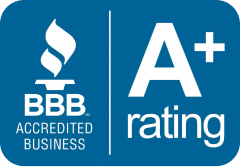It's time to start looking for and comparing plans for 2022.
Medicare drug plans: The deadline for Medicare Open Enrollment is December 7. Examine your Medicare health and prescription drug coverage and compare it to other plans that may be a better fit for you.
You can make the following modifications for your 2022 coverage during Open Enrollment:
- Change whether you obtain Original Medicare or a Medicare Advantage Plan for your Medicare coverage.
- Change your Medicare Advantage Plan (with or without drug coverage)
- Joining, switching, or dropping a Medicare drug plan are all options.
Find Medicare Plans in 3 Easy Steps
We can help find the right Medicare plans for you today

Review your options
Even if you’re satisfied with your current Medicare coverage, you should look at your options for 2022. Here are some of the reasons for this:
- Your needs may change. You might find that you’re visiting the doctor more or less frequently, that your prescription medications are changing, or that you require greater access to healthcare services.
- Benefits and costs can vary. All Medicare coverage options do not provide the same set of benefits. The advantages and costs of a plan can fluctuate from year to year. Check your Annual Notice of Changes (ANOC) to see what’s new for 2022 if you have a Medicare plan.
- New, more affordable Medicare plans may be available. Each plan has a different overall cost, provider network, and services available. Examine whether there are any other plans that would better match your needs or reduce your out-of-pocket expenses.
You don’t need to do anything if you enjoy your existing healthcare coverage and it’s still available in 2022.
Beneficiaries can enroll in a Part D prescription drug plan, either a stand-alone prescription drug plan (PDP) as a supplement to traditional Medicare or a Medicare Advantage prescription drug plan (MA-PD), which covers all Medicare benefits, including drugs, during the Medicare open enrollment period, which runs from October 15 to December 7. In 2021, 48 million Medicare beneficiaries will be enrolled in Medicare Part D plans, accounting for more than three-quarters (77%) of all Medicare beneficiaries, with half (50%) in stand-alone PDPs and the other half (50%) in Medicare Advantage drug plans.
This issue brief examines the Medicare Part D marketplace in 2022, as well as major developments over time, with a focus on stand-alone PDPs. (There’s also a separate report on the Medicare Advantage market in 2022.) Weighted estimates are based on August enrolment unless otherwise stated (see Methods box for additional details).
Highlights for 2022
- In 2022, the average Medicare beneficiary will have a choice of 54 Part D medication plans, including 23 stand-alone drug plans and 31 Medicare advantage drug plans.
- In 2022, there will be 766 Medicare Part D stand-alone prescription drug plans available, a 23 percent decline from 2021, owing to consolidations of PDP offerings sponsored by Cigna and Centene, which will result in three fewer PDPs from each firm in each region.
- Based on current membership, the predicted average monthly price for Medicare Part D stand-alone prescription plans will be $43 in 2022, while average monthly premiums for the 16 national PDPs will range from $7 to $99 in 2022. Twelve of the 16 national PDPs are increasing their average monthly rates, with five of them increasing by more than $10.
- Most Part D PDP subscribers will be in a plan with the usual (maximum) $480 deductible in 2022 if they stay in the same plan.
- Coinsurance for non-preferred pharmaceuticals will range from 40% to 50% (the maximum coinsurance rate allowed for the non-preferred drug tier) in 12 of the 16 national PDPs, with most PDP members facing substantially higher cost-sharing for brands than for generics.
- For participants receiving the Low-Income Subsidy (LIS) (benchmark plans), 198 PDPs will be premium-free in 2022, a lower number than in any year since Part D began in 2006. The drop between 2021 and 2022 is attributable to Cigna and Centene plan consolidations, which offered benchmark PDPs in 2021 that will no longer be available in 2022.
Part D Plan Availability
In 2022, the average Medicare beneficiary will have a choice of more than 50 Medicare Part D drug plans.
In 2022, the average Medicare member will have a choice of 23 stand-alone PDPs, down from 27 in 2021 and a 24 percent decline (Figure 1). Despite the fact that the number of PDP alternatives in 2022 is significantly lower than it was in 2007 (when there were an average of 56 PDP options), beneficiaries in each state still have a variety of stand-alone drug plan options.
Beneficiaries will also have access to 31 MA-PDs in 2022, which represents a 15% increase in MA-PD options since 2021. (This average excludes Medicare Advantage plans that do not provide a drug benefit; in 2022, there will be an average of 39 Medicare Advantage plan options, omitting planes that are not available to all beneficiaries, such as Special Needs Plans and group plans.)
In 2022, a total of 766 Medicare Part D stand-alone prescription drug plans will be available, a decrease of 23% from 2021. Mostly as a result of plan consolidations
In 2022, 16 enterprises in the 34 PDP areas (plus another 10 PDPs in the territories) will supply a total of 766 PDPs, a decline of 230 PDPs (-23%) from 2021.
The market exit of three national PDPs from each firm in each region (all three of Cigna’s Express Scripts PDPs and three of Centene’s six Wellcare PDPs) is primarily the result of consolidations of plan offerings sponsored by Cigna and Centene, resulting in the market exit of three national PDPs from each firm in each region.
(Part D sponsors are only allowed to offer three PDPs in each region.) This explains why there are just over 200 PDPs available in 2021 that will no longer be available in 2022.
Enrollees in these consolidated plans will be automatically transferred to other plans offered by the same plan sponsor, however they will have the option to change plans during the yearly open enrollment period.
Despite the decline in PDP availability for 2022, beneficiaries in each state will have the option of various stand-alone PDPs, ranging from 19 in New York to 27 in Arizona, as well as multiple MA-PDs available at the local level.
The number of companies sponsoring stand-alone drug plans has consistently decreased over time, from more than 40 in 2010 and early years to less than 25 in 2015, and 16 in 2022, which is lower than any prior year since Part D began. In 2022, like among previous years, PDP enrolment is expected to be concentrated in a small number of companies.
Based on August 2021 enrollment, eight out of ten PDP enrollees (80%) are expected to be in PDPs run by just four companies in 2022: CVS Health, Centene, UnitedHealth, and Humana. In 2022, all four companies will offer PDPs in all 34 PDP regions.
AVAILABILITY OF INSULIN DEMONSTRATION PLANS
In 2022, beneficiaries in each state will have the option to enroll in a Part D plan that follows the Innovation Center model, which covers insulin products for non-LIS participants for a $35 monthly copayment during the deductible, initial coverage, and coverage gap periods of the Part D benefit.
In 2022, a total of 2,159 Part D plans (a 32 percent increase over 2021) will participate in this model, comprising 258 PDPs (33 percent of all PDPs) and 1,901 MA-PDs (38 percent of MA-PDs, including segmented plans).
In addition to several MA-PDs, the model includes between 7 and 10 PDPs in each region (Table 1). Non-LIS participants in PDPs that will participate in the insulin model in 2022 account for 45 percent of non-LIS enrollees as of August 2021 enrollment.
Part D Premiums

Premiums for the 16 National PDPs are expected to range from $7 to $99 per month in 2022.
The estimated national average monthly PDP premium for 2022 is projected to be $43, a 15% increase from $38 in 2021, weighted by August 2021 enrollment. It is likely that the actual average weighted premium for 2022, after accounting for enrollment choices by new enrollees and plan changes by current enrollees, will be lower than this estimated average.
CMS reported that the average premium for basic Part D coverage offered by PDPs and MA-PDs will be an estimated $33 in 2022.
Our premium estimate is higher because it is based on PDPs only (excluding MA-PDs) and includes PDPs offering both basic and enhanced coverage (enhanced plans, which account for 60% of all PDPs in 2022, have higher premiums than basic plans, on average).
Premiums for PDPs will vary greatly across plans in 2022, as they have in past years. Average premiums will range from $7 per month (or $85 annually) for SilverScript SmartRx to $99 per month (or almost $1,200 annually) for AARP MedicareRx Preferred among the 16 PDPs available countrywide (Figure 4, Table 2).
In other words, the highest-premium PDP and the lowest-premium PDP have a $1,100 difference in annual premiums among the 16 national PDPs.
The absolute amounts of monthly premiums for 2022 vary substantially across PDPs, as do premium changes from 2021 to 2022, averaged across areas and weighted by enrollment in 2021.
Average monthly premiums are rising for 12 of the 16 national PDPs, with five of them seeing increases of more than $10: Wellcare Medicare Rx Value Plus (+$23, a 52 percent increase), Cigna Extra Rx (+$21, a 54 percent increase), Cigna Essential Rx (+$12, a 49 percent increase), Humana Premier Rx Plan (+$12, an 18 percent increase), and AARP Medicare Rx Preferred (+$11, a 12 percent increase). Monthly premiums are increasing in 2 of the top 3 PDPs by enrollment:
- The average monthly premium for the 1.6 million non-LIS subscribers in CVS Health’s SilverScript Choice (which has a total of 3.4 million members in 2021, including those getting low-income subsidies) would increase by $3 (+9%) from $28 in 2021 to $31 in 2022.
- Between 2021 and 2022, the 1.6 million non-LIS enrollees in the second largest PDP, AARP MedicareRx Preferred, will witness an increase of $11 (+12%) in their average monthly premium from $89 to $99. In 2022, the national PDPs had the highest average monthly premium. Part D enrollees who have been with AARP MedicareRx Preferred since 2016 and plan to continue until 2022 will pay approximately $40 more per month than they did in 2016 when the average monthly premium for this PDP was $61.
- The 1.6 million non-LIS subscribers in Wellcare Value Script, the third largest PDP, will see their monthly premium drop by $4 (-25%) from $16 in 2021 to $12 in 2022.
PDPs with enhanced benefits, such as insulin at a $35 monthly copay and lower or no deductibles, have higher average monthly premiums.
Based on August 2021 enrollment, the majority of Part D stand-alone drug plans (60 percent of PDPs) will offer enhanced benefits for a higher average monthly premium in 2022, and the majority of non-LIS PDP subscribers (72 percent) will be in enhanced plans.
In comparison to the basic benefit design, enhanced benefits may include a lower (or no) deductible, decreased cost-sharing, or a higher starting coverage level. In 2022, the average monthly premium for enhanced benefit PDPs will be $51, which is 44% higher than the monthly premium for basic benefit PDPs ($35). The average monthly premium for enhanced PDPs who participate in the $35 copay insulin model ($63) is nearly twice as expensive as the monthly premium for PDPs who do not participate in the model ($34).
In 2022, the majority of PDPs (82%) will charge a deductible, with 7 out of 10 (71%) charging the normal (maximum) amount of $480. In 2022, the average deductible across all PDPs will be $384. In 2022, the average monthly premium for PDPs with no deductible will be $90, over three times the monthly premium for PDPs with a standard deductible ($33) and twice the monthly premium for PDPs with a partial deductible ($45).
If they stay in their current plan, nearly three-quarters of Part D stand-alone drug plan enrollees without low-income subsidies will pay higher premiums in 2022.
Most Part D stand-alone plan enrollees (nearly 10 million of the 13.3 million Part D PDP enrollees who are responsible for paying the entire premium (excluding LIS recipients)) will see their monthly premium increase in 2022 if they stay in their same plan, while 3.5 million (27%) will see a premium reduction if they stay in their same plan.
Between 2021 and 2022, the average weighted monthly PDP premium will rise by $5 (from $38 to $43), while over 4 million non-LIS participants (28%) will suffer a premium increase of $10 or more per month. Non-LIS enrollees (0.2 million, or 2%), on the other hand, will experience a premium reduction of the same magnitude.
If they stay in their current plans, more than one-third (35%) of non-LIS participants (4.7 million) are expected to pay monthly premiums of at least $60, with 1.3 million (9%) of non-LIS enrollees expected to pay monthly premiums of at least $100. Enrollees in the AARP MedicareRx Preferred PDP in various regions, as well as enrollees in several Blue Cross/Blue Shield PDPs and other PDPs available in limited regions but not countrywide, fall into this category.
Part D Cost Sharing

Part D enrollees pay much higher copays and coinsurance for brand and non-preferred drugs than for generic-tier drugs, and a combination of copays and coinsurance for different formulary tiers.
Part D enrollees will face substantially greater cost-sharing amounts for brands and non-preferred medications (which can contain both brands and generics) in 2022 than for generic tier pharmaceuticals, as well as a combination of copayments and coinsurance for different formulary tiers, as they have in previous years. Preferred generics, generics, preferred brands, non-preferred medications, and specialty drugs are all tiers in the usual five-tier formulary design in Part D.
In 2022, the median standard cost-sharing for all PDPs is $0 for preferred generics and $5 for generics, $42 for preferred brands (up from $40 in 2021), 40% coinsurance for non-preferred medicines (the maximum permitted is 50%), and 25% coinsurance for specialty drugs (the maximum allowed is 50%). (the same as in 2021; the maximum allowed is 33 percent )
Part D enrollees will pay far higher cost-sharing amounts for brands and non-preferred drugs in 2022 than for generic drugs, and a combination of copays and coinsurance for different formulary tiers.
For 2022, plans call for a mix of cost-sharing changes, including both increases and decreases in cost-sharing amounts across different formulary tiers. Cost-sharing hikes for non-preferred medications are notable in six of the 16 national PDPs (while decreasing in only 2 of the 16). In 2022, coinsurance amounts for non-preferred medications will range from 40% to 50% (the maximum allowed for this tier) in 12 of the 16 national PDPs.
Enrollees in SilverScript Choice, the most popular PDP by enrollment, will see their preferred brand cost-sharing change from a $35 flat copayment to a 17 percent coinsurance rate, which could mean higher out-of-pocket costs for drugs costing more than $206 per 30-day supply because 17 percent of this amount or more would exceed the flat $35 copayment.
Furthermore, because actual out-of-pocket expenses are determined by the underlying list price of the drug, paying coinsurance rather than flat copayments makes it more difficult to predict what actual out-of-pocket costs will be in advance.
Find Medicare Plans in 3 Easy Steps
We can help find the right Medicare plans for you today
Low-Income Subsidy Plan Availability
In 2022, fewer Part D stand-alone drug plans will be premium-free to Low-Income Subsidy enrollees (Benchmark Plans) than in any previous year.
Enrollees with low incomes and modest assets are eligible for assistance with Part D plan premiums and cost-sharing under the Part D LIS program. Approximately 13 million Part D members are receiving LIS as of March 2021, with 6.8 million (53%) in MA-PDs and 6.0 million (47%) in PDPs.
Premium-free benchmark plans – that is, PDPs available for no monthly premium to Medicare Part D enrollees receiving the Low-Income Subsidy (LIS) – will make up a smaller percentage of all PDPs in 2022 than in any year since Part D began in 2006, with 198 premium-free benchmark plans, or roughly a quarter of all PDPs (Figure 8). Plan consolidations by Cigna and Centene resulted in a drop in benchmark plan availability between 2021 and 2022; one of Cigna’s Express Scripts PDPs and one of Centene’s Wellcare PDPs that will not be provided in 2022 were benchmark PDPs in all areas in 2021.
In 2022, LIS beneficiaries will have six benchmark plan options on average (weighted by Medicare enrollment), which is about one-fourth the average number of PDP options available overall and the lowest average number of benchmark plan options in any year since Part D began. All LIS members have the option of choosing any plan available in their area, but if they choose a non-benchmark plan, they must pay a portion of the monthly premium for that plan. Unless they move or are reassigned by CMS to premium-free plans, 13 percent of all LIS PDP enrollees who are eligible for premium-free Part D coverage (0.8 million LIS enrollees) will pay Part D premiums averaging $27 per month in 2022.
In 2022, there will be four to nine benchmark plans available, depending on the location. In 2022, CVS Health, Centene, Humana, UnitedHealth, and Cigna are expected to account for 91 percent of the 6.0 million LIS PDP enrollees (based on August 2021 enrollment).
Discussion

Millions of Medicare Part D enrollees without low-income subsidies would experience premium and other cost increases in 2022 if they stay in their current stand-alone drug plan, according to our research of the Medicare Part D stand-alone drug plan landscape for 2022.
In 2022, there are fewer stand-alone PDP options available countrywide, but beneficiaries in each location still have dozens of drug plan options during this year’s open enrollment period, including both PDPs (on average 23 plans) and Medicare Advantage prescription plans (31 MA-PD plans, on average). Part D subscribers receiving Low-Income Subsidies also have fewer benchmark plan selections.
Some LIS enrollees may find it more difficult to locate a premium-free plan that covers all of their prescription prescriptions if the benchmark plan alternatives are reduced.
Some Part D stand-alone drug plan enrollees may see lower premiums and other costs for their drug coverage if they stay in their current plans, but nearly three-quarters of non-LIS PDP enrollees will see higher premiums, as well as higher deductibles and cost-sharing for covered drugs if they stay in their current plans.
Most Part D PDP members who stay in the same plan in 2022 will have a standard (maximum) $480 deductible and will pay substantially more for brand-name medicines than for generics, with non-preferred drugs requiring up to 50% coinsurance. Some beneficiaries may save money overall by switching to a lower-premium plan, which includes the monthly premium, deductible, and cost-sharing, while others may find that a higher-premium plan better meets their needs at a lower overall total cost.
Despite these year-to-year changes in plan coverage and costs, as well as changes in beneficiaries’ health needs, other Abbysconsulting research finds that most Medicare beneficiaries did not compare plans during a recent open enrollment period and that most Part D enrollees did not compare their drug plan’s coverage to that of other drug plans.
It can be difficult to compare and choose among the many Part D plans available, because they differ in a variety of areas other than premiums, such as cost-sharing, deductibles, approved medications, and pharmacy networks. The fact that not only medication coverage but also other aspects, such as cost-sharing for medical benefits, provider networks, and coverage and pricing for supplemental benefits, can make comparing Medicare Advantage drug plans more challenging.
All Part D enrollees could benefit from the ability to compare plans during open enrollment because Part D plans differ in various ways that can have a major impact on an enrollee’s access to prescriptions and out-of-pocket drug spending.
Methods The market for Medicare Part D stand-alone prescription drug plans in 2022, as well as trends across time, are the topic of this study. As of March 2021, there were 19.5 million people enrolled in stand-alone PDPs.
The study excludes 21.3 million non-employer MA-PD subscribers, as well as 4.4 million enrollees in employer-group only PDPs and 2.8 million enrollees in employer-group only MA-PDs for whom plan premium and benefits data are unavailable. The following data sets from the Centers for Medicare & Medicaid Services (CMS) were used to compile information on Part D plan availability, enrollment, and premiums:
- Each fall, just before the yearly enrollment period, the Part D plan landscape files are released.
- Each fall, the Part D plan and premium files are released.
- Each fall, the Part D plan crosswalk files are issued.
- Enrollment files for Part D contracts, plans, states, and counties are released weekly.
- Each spring, the Part D Low-Income Subsidy enrollment files are issued.
- Each fall, the Medicare plan benefit package files are issued.
Unless otherwise stated, premium and deductible estimates are weighted by August enrollment in this analysis. Increases in percentage are derived using non-rounded estimations, which may differ from percentages calculated using rounded estimates in the text.
federal government website: Read More







